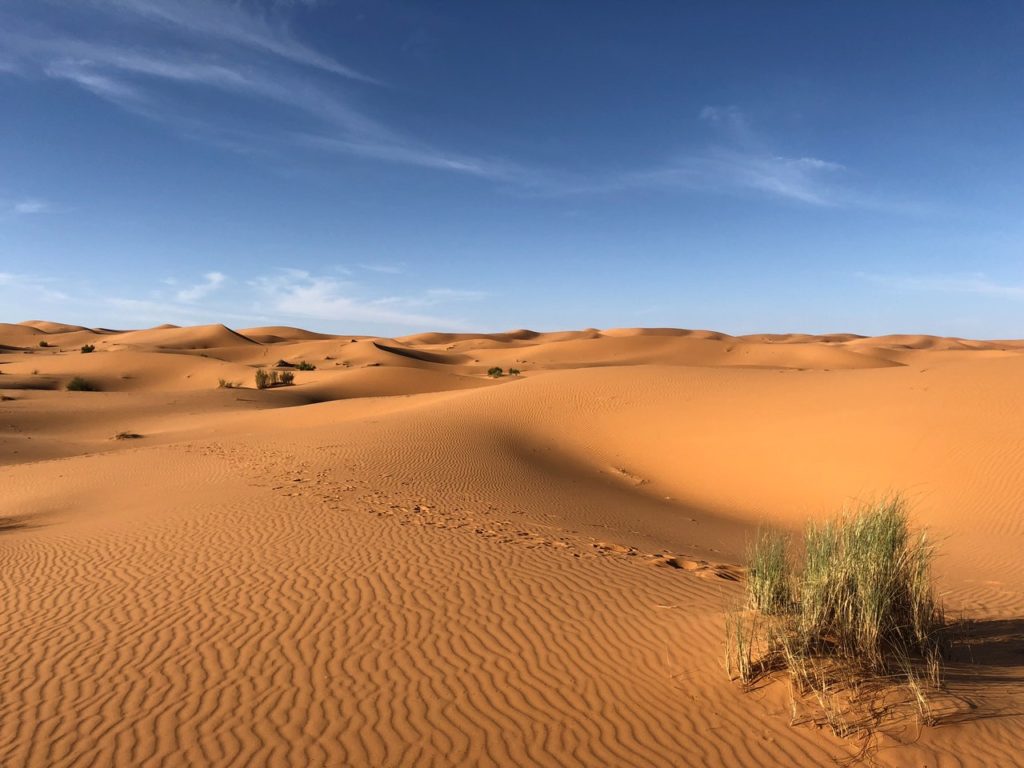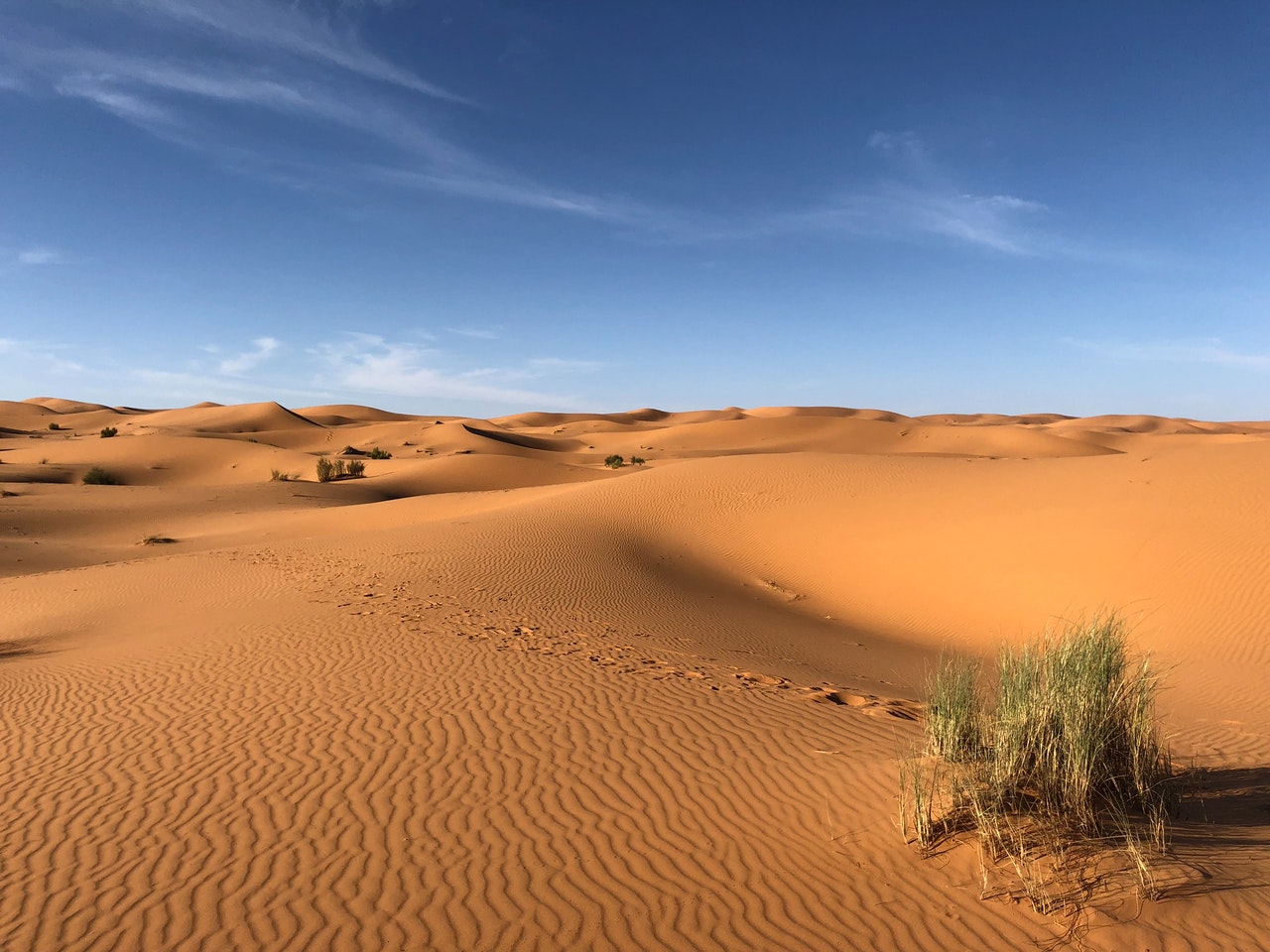
I learned this today. The Sahara Desert has grown so big because the precession of the Earth’s axis as it rotates around the sun changes the location of the African monsoon.
The Sahara Desert is 9.2 million square kilometers, which makes it bigger than every country except for Russia, Canada, China and the USA. The desert is slowly getting bigger and by 2100, it may reach into southern Europe, covering the bottoms of Spain, France, Italy, and Greece.
What made the desert appear where it is? 10,000 years ago, the Sahara Desert was not a desert. There was plenty of rain and the climate was fairly humid. Fossils of river animals, such as crocodiles have been found in the desert. The change from a lush area to the largest dry desert in the world started about 5,400 years ago.
Some deserts, such as the Gobi Desert, are caused by the mountains that surround them. The air has to rise to clear the mountains and as it gets higher it cools and drops a lot of its moisture. The air that comes down on the far side of the mountain is drier and this can cause deserts.
The Sahara Desert is caused by air pressure. Most deserts in the world lie in a belt that is 25 degrees to either side of the equator. This area is called the equatorial low-pressure belt. Because the sun is directly above the equator, the air is heated more than anywhere else. This makes the air expand and it rises. Hot air has a very low pressure and hot low-pressure air carries very little moisture and prevents clouds from forming. Cooler, high-pressure air in the high atmosphere is forced down over the equator, which forces the low-pressure air down towards the ground. Because there is no cloud cover, the sun can heat up the ground very easily and there are very high ground temperatures. This leads to a desert.
The Sahara Desert goes through a 41,000-year cycle, alternating between green, lush land, to the hot, arid desert that it is at the moment. This cycle is caused by the tilt of the Earth. The tilt of the Earth changes between 22° and 24.5° over the 41,000 years. We are currently at 23.5°.
The tilt is caused by the gravity effects of the moon, the sun, and Jupiter and Saturn on Earth. These planets might be a long way away, but they are massive enough to have a gravitational pull on Earth. Over the 41,000 years, this gravitational pull causes the Earth to tilt closer to and away from the sun by 2.5°. That doesn’t sound like a lot, but it is enough of a tilt to cause the Sahara Desert to form.
When the Earth is tilted to 24.5° it is away from the sun and when it hits 22°, it is closer. When the Earth is tilted away from the sun, the African monsoon is strong and it falls over the north of the continent, creating the green Sahara. When the sun tilts towards the sun, the solar radiation warms up the air over the Sahara and the ground, pushing the moisture away and pushing the African monsoon further south. No rain falls, and the Sahara becomes a desert. According to research, it only takes 200 years to go from green Sahara to sandy Sahara. We are currently moving to tilt away from the sun so, if you hang around for another 15,000 years, you might get to see a green Sahara.
This 41,000 year cycle obviously happens whether we are here or not, but climate change is speeding up the process. The desert is growing at an unprecedented rate. Poor, developing countries throughout the Sahara are already suffering from lack of food and water, and this will only get worse.
One solution is to put solar farms in the Sahara. One reason for this is obviously that there are is a huge amount of sunlight and we need to move to renewable energy if we’re going to do anything about climate change. But a second reason is that solar panels would absorb more sunlight than the highly reflective sand. If 20% of the Sahara were covered with solar panels, there would be much less heat reflected, which would create a temperature difference between the air over the desert and the surrounding oceans. The air pressure would drop and moisture would be able to form, making rain. Once rain started, plants would grow, and plants have a much lower albedo than white sand. On top of this, 25% solar panel coverage in the Sahara Desert would be enough to meet the entire world’s energy needs. And this is what I learned today.
If you read this far, I would appreciate a like and a follow.
Photo by Greg Gulik: https://www.pexels.com/photo/green-grasses-on-sahara-desert-1001435/
Sources:
https://sciencing.com/causes-deserts-form-7218824.html
https://en.wikipedia.org/wiki/Sahara
https://en.wikipedia.org/wiki/List_of_countries_and_dependencies_by_area
https://byjus.com/free-ias-prep/pressure-belts-of-the-earth/
https://www.livescience.com/will-sahara-desert-turn-green.html

